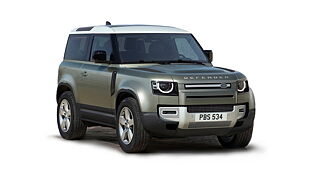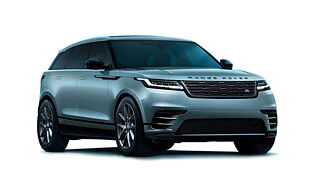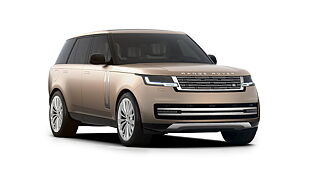What is it?
Why will I buy the Discovery Sport TD4?
It has always been that one car that fits multiple roles. And, now with the newer engine, there’s one more reason to buy it!
Why will I avoid the Discovery Sport TD4?
It’s an expensive car this, but some bits on the interior fail to convey that. It could also have a more cosseting ride.

This is the same Land Rover Discovery Sport we reviewed back in 2015. And at the time we thought it was all the car you’d ever need. You can read more about it HERE.
You could drive it peacefully to work, take the family out over the weekend in safety and luxury, and when the going got slushy, rocky or slippery, you could just call upon one of the SUV’s off-road modes to see you through. We witnessed the latter during our inaugural CarWale Off-Road Day, which you can read more about HERE.

But, we weren't completely impressed with its ride at the time. And, we also thought the engine just didn't have the same levels of refinement as BMWs and Audis. The engine wasn't very happy when rushed either.
The Discovery Sport you see here though, gets a new engine. Part of JLR's new generation powertrain family called Ingenium, the engine is supposed to give this Land Rover better performance, higher fuel economy and quieter running.
Time then to find out...
How is it on the inside?

Now, Land Rover might have given the Sport a new engine – which we will talk about in a bit – but it hasn't done much to spruce up its insides. It's still a well-built cabin, of course, and it looks and feels luxurious especially in this HSE trim. Plus, there's ample space for four. Actually, since this one's a 5+2 seater, if push comes to shove, you can throw in seven occupants in there.

Now although we like the cabin overall; it's airy, practical, ergonomically sound, and it gets its fair share of bells and whistles like before. But, the plastic used for various buttons, especially on the dashboard, look and feel substandard for a car of this class. Even the central display is a tad too small and old school for our liking.

Equipment wise though there’s nothing to criticise. There’s keyless entry and start, automatic headlamps and wipers, mood lighting, dual zone climate control, electric seats upfront, a multimedia system with steering mounted controls, a fair selection of cup and bottle holders and lots of leather.

It also gets cruise control and reversing aid in the form of a camera and proximity sensors front and back. And on the safety end, it gets seven airbags, ABS and ESP among others.
How does it drive?

We have always liked the way the Discovery Sport drives. It’s easy and relaxed in the city. It’s planted and confident, if a bit noisy, at highway speeds. And, for an SUV that doesn't look for excuses when it's time to get dirty, it's pretty good around the bends too.
There’s hardly any slack when it comes to the steering response. Plus, for an SUV this size and weight, the turn-in has always been confident and accurate. All of this remains true for this new version as well, mainly because nothing has changed on the mechanical front besides the engine.

Yes, the engine.
Well, for starters, this new Ingenium unit is quieter, more refined and freer revving. It’s peppier on the move too, which makes the Discovery Sport feel lighter and more spirited than both its weight and power output might suggest.
This four cylinder 2-litre diesel – still mated to a smooth shifting nine-speed torque converter automatic – makes 148bhp and 382Nm of peak torque. And with this engine and seven seats, the Sport weighs in at around 100kg under the 2-tonne mark. So, it’s not the ideal configuration for a quick SUV. However, with a claimed top speed on 180kmph and a 0-100kmph time of a few decimals over 10 seconds, it’s not slow or lethargic by an margin.

You can have this engine in a higher state of tune as well; one that puts out 177bhp. But, that’s reserved for the top of the line HSE Luxury trim. So, you will get 8kmph higher top speed and a 0-100kmph time that’s about a second a half quicker.
As you can tell, the difference isn’t much. No wonder, the throttle response on our test car felt sharp; the turn of speed felt energetic; and courtesy the steering mounted paddle shifters, the Sport didn’t feel dull or detached even when charging up a twisty hill road.
The ride though still isn’t the most comfortable. It’s on the stiff end of the stick. So, it’s audible over bumps; the rear kicks around a bit; and although it manages to iron out the bumps and mild potholes at speed, it's not the happiest taking on squared out edges. So not much has changed on that end.
Should I buy one?

Let us say the same thing we did when we first reviewed the Discovery Sport because it still holds true: It is a do-it-all car. From office parking lots to unseen trails, the Sport can do it all. And, it looks good and feels luxurious while doing it. What’s more, now with the new engine, it’s also quieter, more refined, peppier and more efficient. Need we say more?
Where does it fit in?

For around Rs 60 lakh on the road in Mumbai, the Discover Sport HSE isn’t exactly a value purchase. But, the other competitors are similarly priced as well. The BMW X3 in the Expedition trim retails for around Rs 57 lakh on the road while the Mercedes-Benz GLC in 220d Sport trim costs a little over Rs 60 lakh.

![Land Rover Discovery Sport [2017-2018] Exterior Land Rover Discovery Sport [2017-2018] Exterior](https://imgd.aeplcdn.com/642x361/cw/ec/31020/Land-Rover-Discovery-Sport-Exterior-107353.jpg?v=201711021421&wm=1&q=80)
![Land Rover Discovery Sport [2017-2018] Interior Land Rover Discovery Sport [2017-2018] Interior](https://imgd.aeplcdn.com/642x361/cw/ec/31020/Land-Rover-Discovery-Sport-Interior-107408.jpg?v=201711021421&wm=1&q=80)
![Land Rover Discovery Sport [2017-2018] Exterior Land Rover Discovery Sport [2017-2018] Exterior](https://imgd.aeplcdn.com/642x361/cw/ec/31020/Land-Rover-Discovery-Sport-Exterior-107386.jpg?v=201711021421&wm=1&q=80)
![Land Rover Discovery Sport [2017-2018] Exterior Land Rover Discovery Sport [2017-2018] Exterior](https://imgd.aeplcdn.com/642x361/cw/ec/31020/Land-Rover-Discovery-Sport-Exterior-107387.jpg?v=201711021421&wm=1&q=80)
![Land Rover Discovery Sport [2017-2018] Interior Land Rover Discovery Sport [2017-2018] Interior](https://imgd.aeplcdn.com/642x361/cw/ec/31020/Land-Rover-Discovery-Sport-Interior-107393.jpg?v=201711021421&wm=1&q=80)
![Land Rover Discovery Sport [2017-2018] Interior Land Rover Discovery Sport [2017-2018] Interior](https://imgd.aeplcdn.com/642x361/cw/ec/31020/Land-Rover-Discovery-Sport-Interior-107394.jpg?v=201711021421&wm=1&q=80)
![Land Rover Discovery Sport [2017-2018] Interior Land Rover Discovery Sport [2017-2018] Interior](https://imgd.aeplcdn.com/642x361/cw/ec/31020/Land-Rover-Discovery-Sport-Interior-107395.jpg?v=201711021421&wm=1&q=80)
![Land Rover Discovery Sport [2017-2018] Interior Land Rover Discovery Sport [2017-2018] Interior](https://imgd.aeplcdn.com/642x361/cw/ec/31020/Land-Rover-Discovery-Sport-Interior-107396.jpg?v=201711021421&wm=1&q=80)
![Land Rover Discovery Sport [2017-2018] Image Land Rover Discovery Sport [2017-2018] Image](https://imgd.aeplcdn.com/272x153/cw/ec/28678/Land-Rover-Discovery-Sport-Right-Front-Three-Quarter-94738.jpg?wm=0&q=80)

























